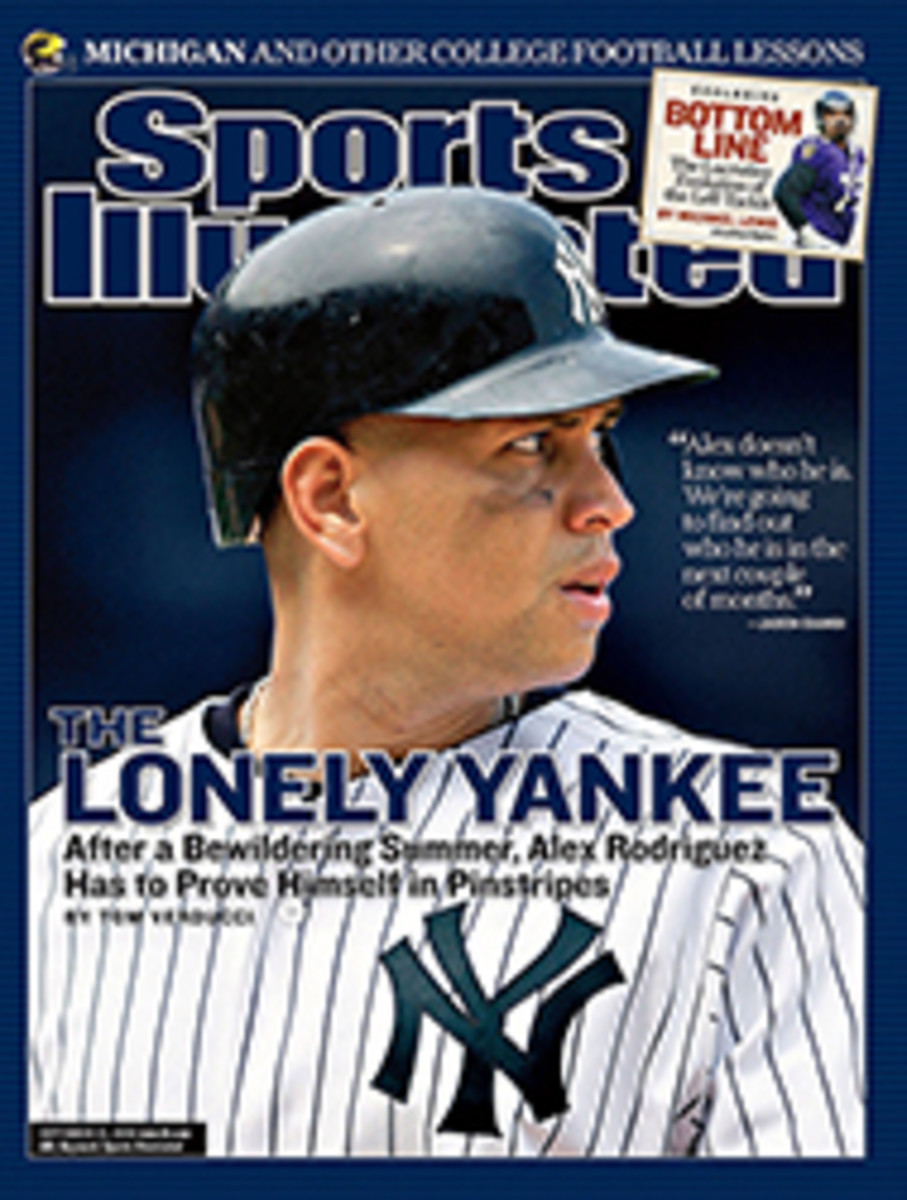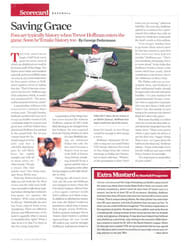
Double-barreled
WHILE TERRELLOWENS'S signing caused the biggest off-season stir in Dallas, it wasn't theCowboys' only intriguing personnel move. In April, they drafted Notre Dametight end Anthony Fasano in the second round-despite having a 24-year-old,two-time Pro Bowl player, Jason Witten, already manning the position. Far froma challenge to Witten, who averaged 63 receptions over his first three seasons,Fasano's drafting signaled a change in coach Bill Parcells's playbook. Thisyear the Cowboys are joining roughly one third of NFL teams in employing twotight ends in their base offenses.
The alignment wasin vogue in the 1990s, before three-receiver sets and spread formations becamethe offensive craze. But as defenses adjusted to that aerial attack, thetwo-tight-end set returned, with a twist: Increased athleticism at the positionmakes the alignment a more formidable weapon than before. "This hybridposition is not a traditional tight end," says Parcells, who is usingWitten (6'5'', 265 pounds) and Fasano (6'4'', 258) together on about 80% ofplays. "If you put just another slug tight end in there, an immovable guy,you're not creating an advantage."
The reemergenceof the two-tight-end alignment can be attributed to 1) the versatility of thefaster, stronger athletes playing the position; 2) the proliferation of 3-4defenses, which are prone to having linebackers cover tight ends; and 3) therise of the Cover 2 scheme, which is susceptible to mid-range passes underneaththe safeties-the tight end's bread and butter. Parcells prefers using a secondtight end over a third wideout because he wants a tight end going against asmaller safety or, better yet, a slower linebacker, rather than a wideoutagainst a nickelback. Even in long-yardage situations Dallas and other teamsare using an extra tight end to create mismatches. "Unless you have a thirdwide receiver who is just so superior to the other team's additional defensiveback," says Parcells, "another good tight end gives you an advantage inthe matchups."
The two-tight-endformation has been part of the Colts offense since coordinator Tom Moore andquarterback Peyton Manning arrived in 1998. Now, with a trio of versatile tightends in Dallas Clark (6'3", 252), Ben Utecht (6'6", 251) and BryanFletcher (6'5", 230) Indy uses the formation almost exclusively. Says Coltspresident Bill Polian, "When you flex out the athletic tight end, you putthe defense in a bind: Does it come with a nickelback, who can be overpoweredor blocked [on a run], or does it leave a linebacker on the field, which isreally a disadvantage [in coverage]?" In San Francisco the 49ers had aprize tight end in Eric Johnson (6'3", 252), who had a team-high 82 catchesfor 825 yards in 2004 but missed last season with a torn right plantar fascia,and this year they drafted the highly athletic Vernon Davis (6'3", 253) inApril. But instead of pitting the two against each other in a competition forthe starting job, offensive coordinator Norv Turner is using them in tandem onroughly half of San Francisco's snaps. The Patriots, having lost wideouts DeionBranch and David Givens, now feature two first-round tight ends in theirpassing game: Daniel Graham, a superb blocker who's dangerous in the openfield, and Ben Watson, a solid blocker and receiver who has sub-4.5 speed."Because they've got guys who've been in the system," says Witten,"New England is probably the team that executes [the two-tight-end offense]the best."
Of course, ithelps all teams that colleges are developing tight ends that fit the newprototype. "The college game is so much more pass-oriented than it everwas," says Parcells. "I would say it's a trend, but it's also the onlycars they're selling these days."
PHOTO
BILL FRAKES
EXTRA TIGHT The Cowboys added new formations to get Witten (82) and rookie Fasano (80) on the field at the same time.

